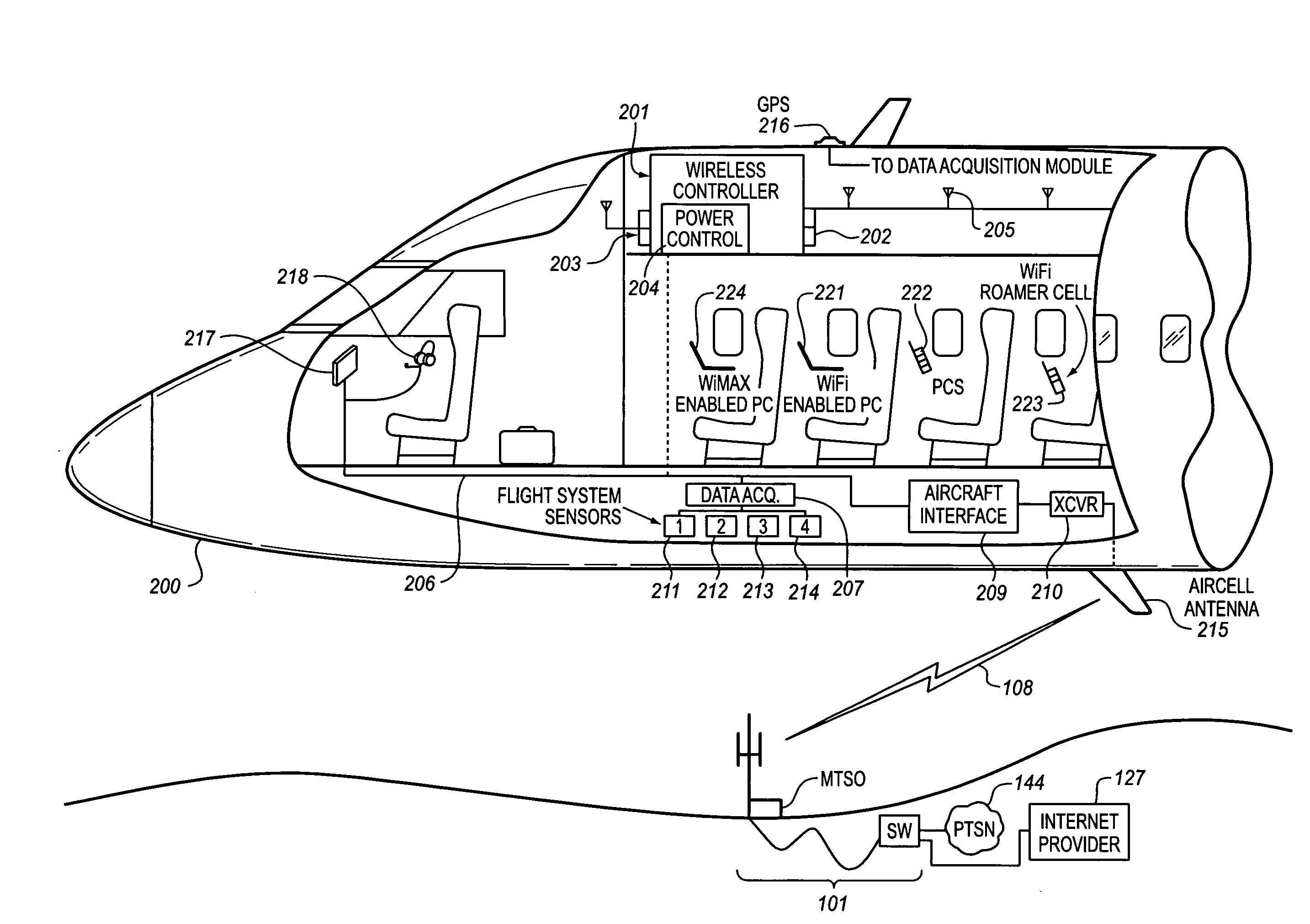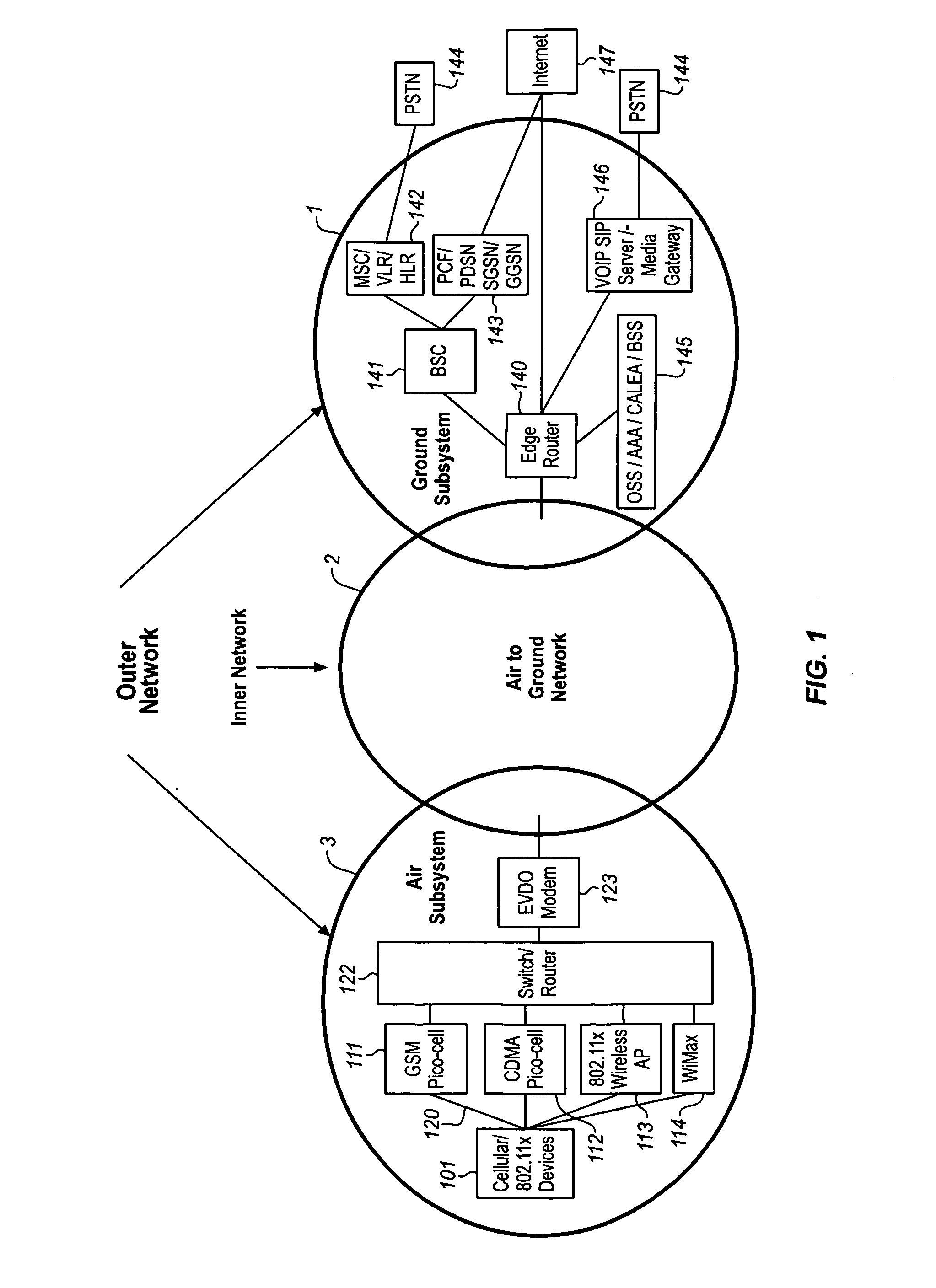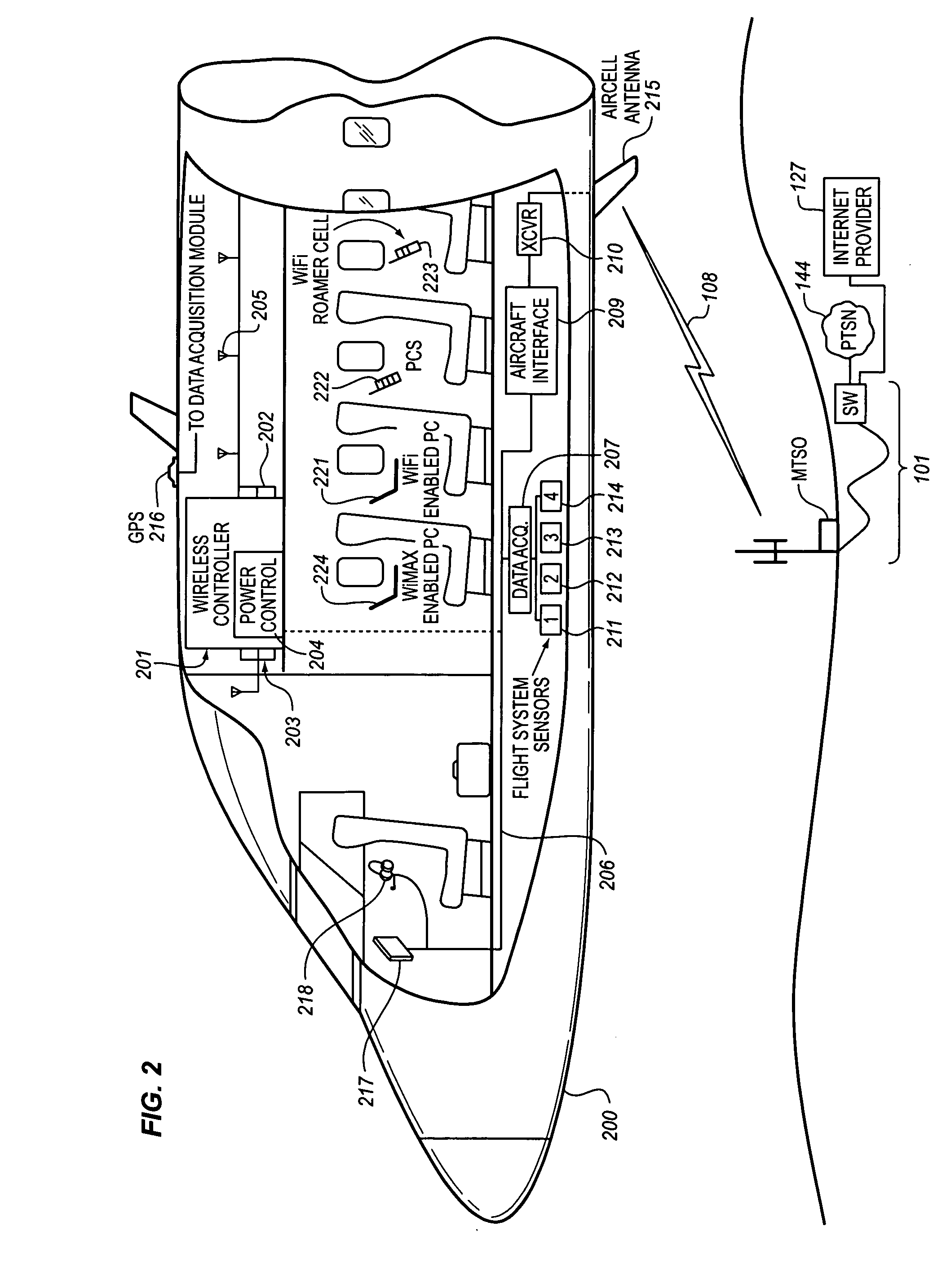System for managing mobile internet protocol addresses in an airborne wireless cellular network
a mobile internet protocol and wireless cellular network technology, applied in the field of cellular communications, can solve the problem that the communication cannot be individually identified by the ground-based access network, and achieve the effect of simplifying the provision of these services and enhancing the travel experience of travelers
- Summary
- Abstract
- Description
- Claims
- Application Information
AI Technical Summary
Benefits of technology
Problems solved by technology
Method used
Image
Examples
first embodiment
[0028]In this protocol, the Air-To-Ground Modems are not assigned an IP address, but there is a Mobile IP Client on the Air-To-Ground Communications Unit with a Forward Address on the Public Data Switched Network. This Mobile IP Client is configured with a Home Address and registers with a corresponding Foreign Address / Home Address to associate a Home Address with Air-To-Ground Modem1 or Air-To-Ground Modem2 on the Public Data Switched Network / Foreign Address. The Home Address to Care of Address (subnet address) association does not change, since the Care of Address is the Public Data Switched Network IP address and managed in the Public Data Switched Network. The Mobile IP Client on the Air-To-Ground Communications Unit requires information from the Air-To-Ground Modem to update Mobile IP bindings on Foreign Address / Home Address. The Mobile IP Client must receive Air-To-Ground Modem1 and Air-To-Ground Modem 2 Assigned IP (this is the Care of Address for the Mobile IP Client). The M...
second embodiment
[0029]In this protocol, the Air-To-Ground Modems are each assigned an IP address and the Mobile IP Client resides on the Air-To-Ground Control Processor Unit. This Mobile IP Client is configured with a Home Address, and a corresponding Care of Address is associated with Air-To-Ground Modem1 or Air-To-Ground Modem2 in the Air-To-Ground Communications Unit. The Mobile IP Client on the Air-To-Ground Control Processor Unit is connected via a Mobile IP Tunnel to the Public Data Switched Network. The traffic is switched between the two Air-To-Ground Modems as signal strength is lost / gained on the individual Air-To-Ground Modems.
third embodiment
[0030]In this protocol, the Air-To-Ground Modems are each assigned an IP address, and Simple IP Addresses are managed on the Air-To-Ground Communications Unit. Multiple IP Tunnels connect the Air-To-Ground Control Processor Unit to a Router in the ground-based Access Network. The Air-To-Ground Control Processor Unit performs the tunnel endpoint functions and uses a Public Address for these IP Tunnels. The traffic is switched between the two Air-To-Ground Modems as signal strength is lost / gained on the individual Air-To-Ground Modems.
Ground Subsystem
[0031]The Ground Subsystem 1 consists of Edge Router 140 which connects the voice traffic of the Air-To-Ground Network 2 with traditional cellular communication network elements, including a Base Station Controller 141 and its associated Mobile Switching Center 142 with its Visited Location Register, Home Location Register to interconnect the voice traffic to the Public Switched Telephone Network 144, and other such functionalities. In ad...
PUM
 Login to View More
Login to View More Abstract
Description
Claims
Application Information
 Login to View More
Login to View More - R&D
- Intellectual Property
- Life Sciences
- Materials
- Tech Scout
- Unparalleled Data Quality
- Higher Quality Content
- 60% Fewer Hallucinations
Browse by: Latest US Patents, China's latest patents, Technical Efficacy Thesaurus, Application Domain, Technology Topic, Popular Technical Reports.
© 2025 PatSnap. All rights reserved.Legal|Privacy policy|Modern Slavery Act Transparency Statement|Sitemap|About US| Contact US: help@patsnap.com



